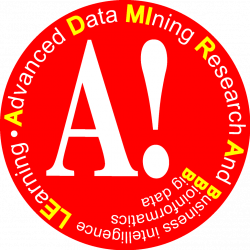2018
Kuncheva, Ludmila I; Rodríguez, Juan José
On feature selection protocols for very low-sample-size data Journal Article
In: Pattern Recognition, vol. 81, pp. 660-673, 2018, ISSN: 0031-3203.
Abstract | Links | BibTeX | Tags: Cross-validation, Experimental protocol, Feature selection, SELECTED, Training/testing, Wide datasets
@article{Kuncheva2018b,
title = {On feature selection protocols for very low-sample-size data},
author = {Ludmila I Kuncheva and Juan José Rodríguez},
url = {https://www.sciencedirect.com/science/article/pii/S003132031830102X},
doi = {10.1016/j.patcog.2018.03.012},
issn = {0031-3203},
year = {2018},
date = {2018-09-01},
journal = {Pattern Recognition},
volume = {81},
pages = {660-673},
abstract = {High-dimensional data with very few instances are typical in many application domains. Selecting a highly discriminative subset of the original features is often the main interest of the end user. The widely-used feature selection protocol for such type of data consists of two steps. First, features are selected from the data (possibly through cross-validation), and, second, a cross-validation protocol is applied to test a classifier using the selected features. The selected feature set and the testing accuracy are then returned to the user. For the lack of a better option, the same low-sample-size dataset is used in both steps. Questioning the validity of this protocol, we carried out an experiment using 24 high-dimensional datasets, three feature selection methods and five classifier models. We found that the accuracy returned by the above protocol is heavily biased, and therefore propose an alternative protocol which avoids the contamination by including both steps in a single cross-validation loop. Statistical tests verify that the classification accuracy returned by the proper protocol is significantly closer to the true accuracy (estimated from an independent testing set) compared to that returned by the currently favoured protocol.},
keywords = {Cross-validation, Experimental protocol, Feature selection, SELECTED, Training/testing, Wide datasets},
pubstate = {published},
tppubtype = {article}
}
High-dimensional data with very few instances are typical in many application domains. Selecting a highly discriminative subset of the original features is often the main interest of the end user. The widely-used feature selection protocol for such type of data consists of two steps. First, features are selected from the data (possibly through cross-validation), and, second, a cross-validation protocol is applied to test a classifier using the selected features. The selected feature set and the testing accuracy are then returned to the user. For the lack of a better option, the same low-sample-size dataset is used in both steps. Questioning the validity of this protocol, we carried out an experiment using 24 high-dimensional datasets, three feature selection methods and five classifier models. We found that the accuracy returned by the above protocol is heavily biased, and therefore propose an alternative protocol which avoids the contamination by including both steps in a single cross-validation loop. Statistical tests verify that the classification accuracy returned by the proper protocol is significantly closer to the true accuracy (estimated from an independent testing set) compared to that returned by the currently favoured protocol.

